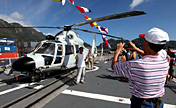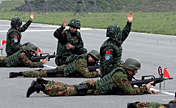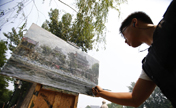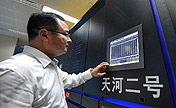

Bright prospects
Researchers in Europe have called for more cooperation.
Sebastian Schmidt, an expert at the Juelich Research Center in Germany, said that the performance of Tianhe-2 and the design team are amazing.
"Development of supercomputers in the future will require much closer international collaboration, since it takes joint efforts to combat global challenges and to find solutions," Schmidt said.
Li, the deputy chief designer, said that the Juelich Research Center is now cooperating with the National Supercomputing Center in Tianjin on some challenging computational projects.
"By joining hands with China, Europe will also reduce its dependence on the United States in the area of supercomputing," he said.
Despite great progress, Liao, the chief designer, said that there remains huge room for improvement in energy efficiency, software application and development of a new generation of CPU.
"In the future, we hope domestic demands for supercomputing are fully tapped to stimulate us to design and produce supercomputers with better performance," Liao said.
China's supercomputing dream started in 1978 when then-Chinese leader Deng Xiaoping chose the National University of Defense Technology as one of the major institutions to develop China's own supercomputer.
Five years later, China's first supercomputer Yinhe-I came into being, which could perform 100 million calculations per second.
Supercomputing drew people's attention again in 2007, when Dawning, vendor of the Nebulae supercomputer, helped China National Petroleum Corporation discover 100 million metric tons of oil reserves under Nanpu in Hebei province.
 |
 People welcome Chinese missile destroyer "Harbin"
People welcome Chinese missile destroyer "Harbin" CPAPF, Russia's Domestic Security Force joint training
CPAPF, Russia's Domestic Security Force joint training World Naked Bike Ride kicks off in Vancouver
World Naked Bike Ride kicks off in Vancouver Los Angeles' Chinatown sets up statue of Bruce Lee
Los Angeles' Chinatown sets up statue of Bruce Lee Photos:
Photos:  Triplet red pandas enjoy their life at Panda World
Triplet red pandas enjoy their life at Panda World Calling for new type of industry
Calling for new type of industry Double life: Editor with a rock heart
Double life: Editor with a rock heart Memorize the old Beijing with painting brush
Memorize the old Beijing with painting brush Giant panda spotted in the wild in NW China
Giant panda spotted in the wild in NW China Bidding on change
Bidding on change 'The Grandmaste' as opening film of Chinese Film Festival
'The Grandmaste' as opening film of Chinese Film Festival  Gold products:
Gold products:  Daring new collections hit fashion shops
Daring new collections hit fashion shops Tianhe-2 ranked as the world's fastest computer
Tianhe-2 ranked as the world's fastest computer